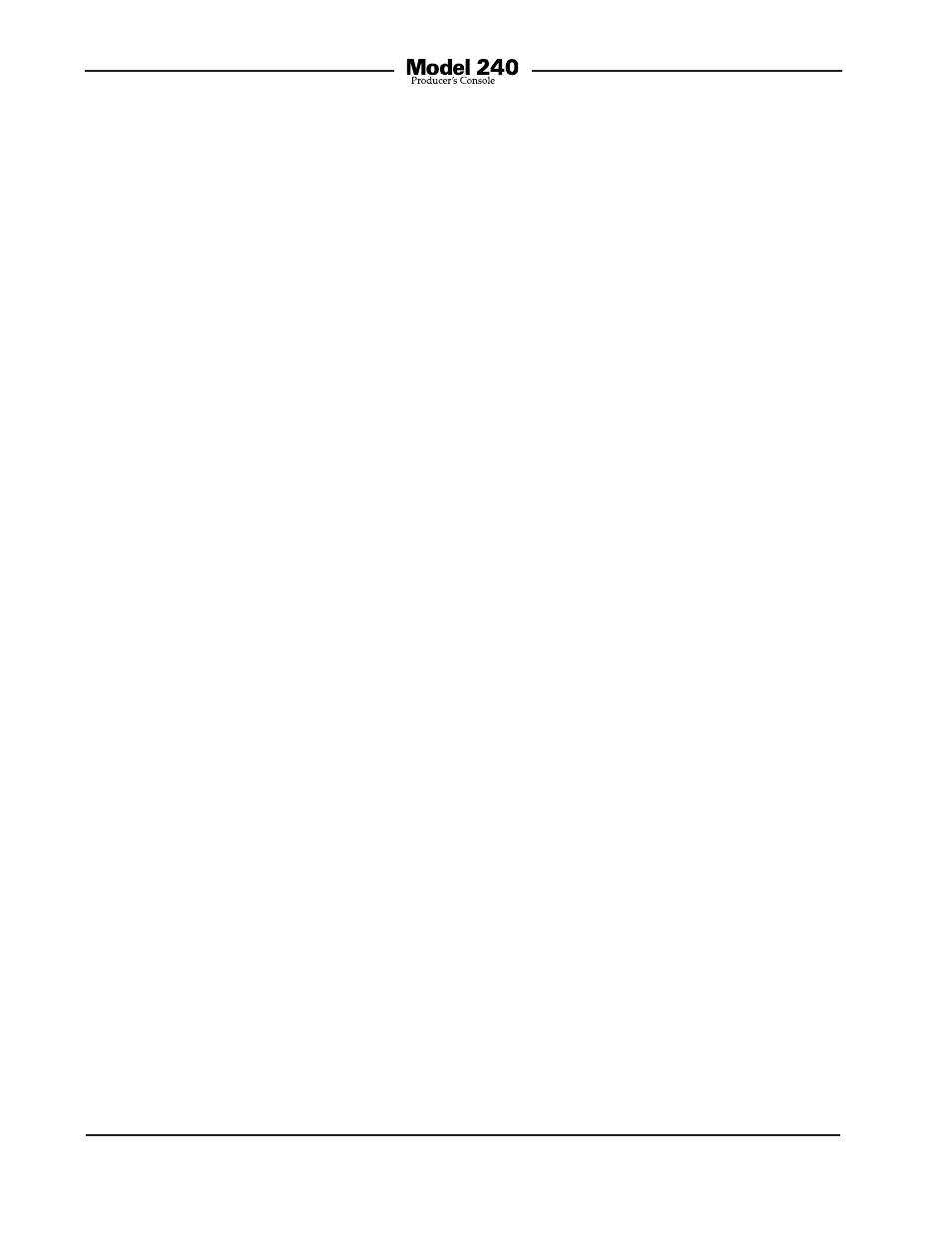Connecting an ifb circuit – Studio Technologies 240 User Manual
Page 26

Issue 1, August 2013
Model 240 User Guide
Page 26
Studio Technologies, Inc.
provide DC power and one or two chan-
nels of audio over standard 3-conduc-
tor cables that terminate with 3-pin XLR
connectors. Establishing the correct “listen”
and “talk” levels is critical in achieving good
audio performance. In North America the
two most common intercom systems are
those from RTS and Clear-Com. From
tests performed in Studio Technologies’
lab, the nominal RTS TW-series audio level
is approximately –10 dBu. The dynamic
range control provided by user beltpacks
such as the BP325 was very good, limiting
the maximum level to at most 10 dB above
the nominal. The nominal audio level as-
sociated with a Clear-Com system was
harder to characterize. It appeared to be a
few dB less than –10 dBu, but the dynamic
range was much larger. Level peaks of
10 to 20 dB over nominal were easy to
produce.
This objective data led to the following
Model 240 design decision: When audio
signals from intercom pins 2 and 3 are
used as headphone sources level sensitiv-
ity selection switches or trim pots were not
required. The level range available on the
Model 240’s front-panel controls proved
to be sufficient for the user to be able to
establish the desired listening level.
When main output audio (program and
talk) was routed to the intercom circuit a
single audio level proved to work well with
both RTS and Clear-Com systems. This
was mainly possible due to the excellent
dynamic-range-control provided by the
compressor circuit. Its threshold (2 dB
above the Model 240’s nominal output
level) and compression ratio (5:1) resulted
in excellent audio. So in the end, no level
or compatibility switches of any kind were
required to achieve the desired “listen” and
“talk” performance.
The preceding paragraphs may elicit howls
of protests from a host of engineers and
intercom system experts. But for years
we’ve heard differing reports as to the
actual nominal audio levels for RTS and
Clear-Com systems. The “in-the-know cats”
agreed that RTS TW intercom was –10 dBu,
a value that we confirmed in our tests. But
the nominal level for Clear-Com was vari-
ously reported as –20, –15, –12, –10, and
“you know, the Clear-Com level!” It’s most
likely that early Clear-Com systems did use
a nominal level of approximately –20 dB.
But after making controlled tests, the con-
temporary Clear-Com equipment seemed
to be much closer to –10 dBu. And with
the limited dynamic-range control that we
experienced, the actual level during opera-
tion may vary widely. That’s why intercom
interface sensitivity, compatibility switches,
or rotary controls were not included in the
Model 240.
In conclusion, the engineers at Studio
Technologies are always open to learning
more. Additional information from the field
concerning such topics as intercom system
levels, impedance matching, and DC power
sourcing would be welcomed. Stopping
by our offices for an in-person chat would
be also great. Bringing along a bit of road
“swag” would be appreciated. Just park the
production trailers in the alley behind our
warehouse—plenty of power is available!
Connecting an IFB Circuit
A broadcast-standard powered (“wet” or
DC with audio) IFB circuit can be directly
connected to the Model 240’s intercom
interface. Originated by sources such as
the RTS 4000-series IFB system or IFB
interface devices from Studio Technologies,
the connected IFB circuit can provide two
channels of cue audio as well as DC power
to operate the Model 240. No Model 240
